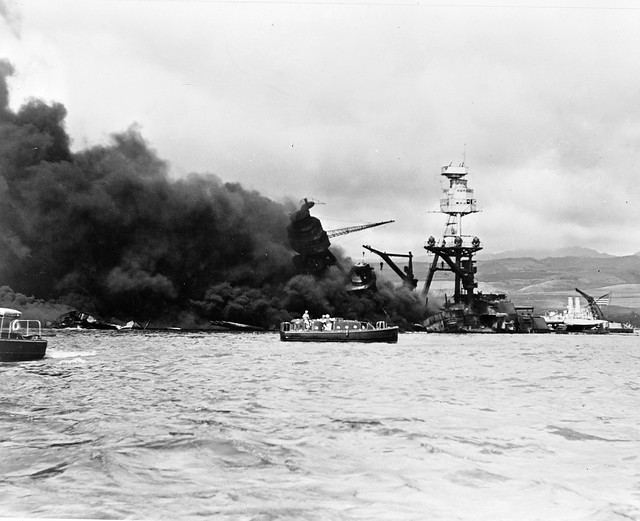After World War II started, the United States supported Great Britain with materials while keeping a neutral military status. All of this changed, on December 7th, 1941, when the Japanese air force hit the American Navy and destroyed many ships and killed many soldiers in Pearl Harbor. As a result, the United States had to counter-strike and were essentially forced into the second World War.
Pearl Harbor location
Before World War II, Hawaii was not an American State. However, it was an American Territory and the United States had navy forces in Pearl Harbor on the island of O’ahu, which is in the Pacific Ocean between the U.S. and Japan. While Japan expanded and invaded more and more Asian countries, the Japanese always saw the presence of the U.S. Navy in Hawaii as a threat. Eventually, two years after World War II broke out, Japan made the decision to attack the American Navy forces in Pearl Harbor before the U.S. Navy attacked them.
The Attack on Pearl Harbor
The American people and government were surprised and shocked when Japanese airplanes flew over Pearl Harbor bombing and destroying American warships. Japanese fighter planes destroyed most U.S. fighter airplanes while they were still on the ground. The U.S. forces lost their air defense before they were even able to get in the air. In a second wave of the Japanese attack, more bombers and fighter airplanes continued to drop bombs and torpedoes on U.S. warships destroying many of them and killing thousands of soldiers on board those ships.

The damage included warships, destroyers, and cruisers, in addition to the fighter planes and aircrafts. Almost all the damaged ships in Pearl Harbor were restored and repaired except three. The Arizona, the Utah, and the Oklahoma ships sunk during the attack with 1,100 U.S. soldiers on board of the USS Arizona alone.
At this point, the United States avoided taking part in World War II and managed to stay neutral for two years. Thus, the attack on Pearl Harbor surprised both the people and the government. After the initial shock of the unexpected attack, the United States declared war on Japan the very next day on December 8th, 1941.
The Japanese mistake
Japan made a big mistake to think that a single attack on Pearl Harbor would prevent the U.S. Navy from striking Japanese forces in Asia. The attack clearly did not destroy all the U.S. Navy forces as the Japanese thought it would.
While Japan’s leaders thought this attack would cripple the U.S. Navy and remove the threat in the Pacific, the attack had the exact opposite effect. The next day after the attack on Pearl Harbor, the United States declared war on Japan and the rest of the Axis Powers and joined the Allied Powers, which had a huge effect on strengthening the Allied Powers and the outcome of World War II.
Back to World War II topics
